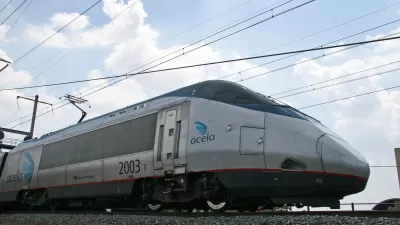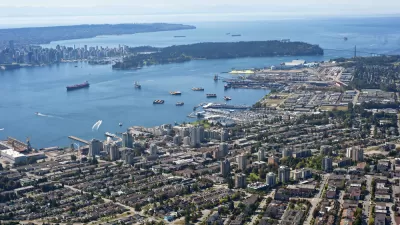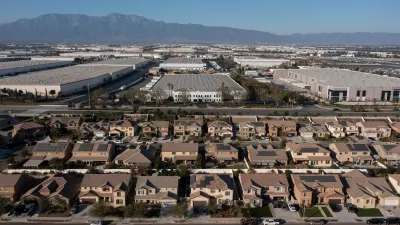The potential benefits of building tall buildings with wood are numerous.

Vancouver urbanists are calling for the city to make greater use of wood in high-rise buildings.
An article by Leyland Cecco chooses a prominent example to kick of an examination of the potential benefits of wood high rises:
Already, Vancouver’s 18-storey Brock Commons tower stands as a testament to the vast possibilities of wood. Once the world’s tallest timber building, it was built cheaper, faster and with less environmental impact than a comparable steel and concrete structure would have been – offsetting an estimated 2,432 metric tonnes of carbon.
Vancouver's province, British Columbia, has changed the provincial building codes to double the height limit for wood-frame buildings. Now the maximum height for a wood-framed building is 12 stories. The Canadian government could soon follow suite and set the same building height nationwide.
Vancouver isn't stopping at 12 stories, however. Cecco explains the next step in the evolution of wood-framed high rises:
Vancouver is now pushing even those limits by unveiling plans for the Canada Earth Tower, an ambitious 40-storey tower that would be the world’s tallest wooden building. The design includes around 200 homes, with an outdoor garden for every three floors as well as premium office space and retail.
The innovations occurring in Vancouver are also having a ripple effect around the world, according to the article.
FULL STORY: Canadian cities take wooden skyscrapers to new heights

Trump Administration Could Effectively End Housing Voucher Program
Federal officials are eyeing major cuts to the Section 8 program that helps millions of low-income households pay rent.

Planetizen Federal Action Tracker
A weekly monitor of how Trump’s orders and actions are impacting planners and planning in America.

Ken Jennings Launches Transit Web Series
The Jeopardy champ wants you to ride public transit.

Rebuilding Smarter: How LA County Is Guiding Fire-Ravaged Communities Toward Resilience
Los Angeles County is leading a coordinated effort to help fire-impacted communities rebuild with resilience by providing recovery resources, promoting fire-wise design, and aligning reconstruction with broader sustainability and climate goals.

When Borders Blur: Regional Collaboration in Action
As regional challenges outgrow city boundaries, “When Borders Blur” explores how cross-jurisdictional collaboration can drive smarter, more resilient urban planning, sharing real-world lessons from thriving partnerships across North America.

Philadelphia Is Expanding its Network of Roundabouts
Roundabouts are widely shown to decrease traffic speed, reduce congestion, and improve efficiency.
Urban Design for Planners 1: Software Tools
This six-course series explores essential urban design concepts using open source software and equips planners with the tools they need to participate fully in the urban design process.
Planning for Universal Design
Learn the tools for implementing Universal Design in planning regulations.
Ada County Highway District
Clanton & Associates, Inc.
Jessamine County Fiscal Court
Institute for Housing and Urban Development Studies (IHS)
City of Grandview
Harvard GSD Executive Education
Toledo-Lucas County Plan Commissions
Salt Lake City
NYU Wagner Graduate School of Public Service





























